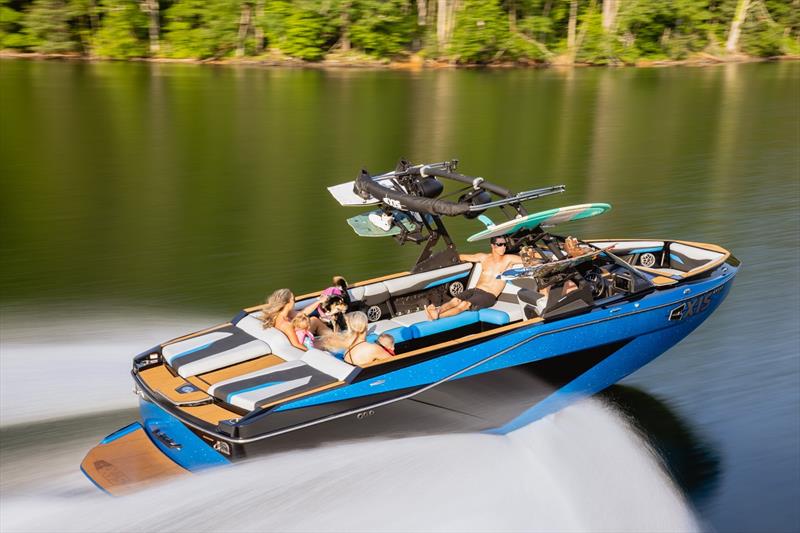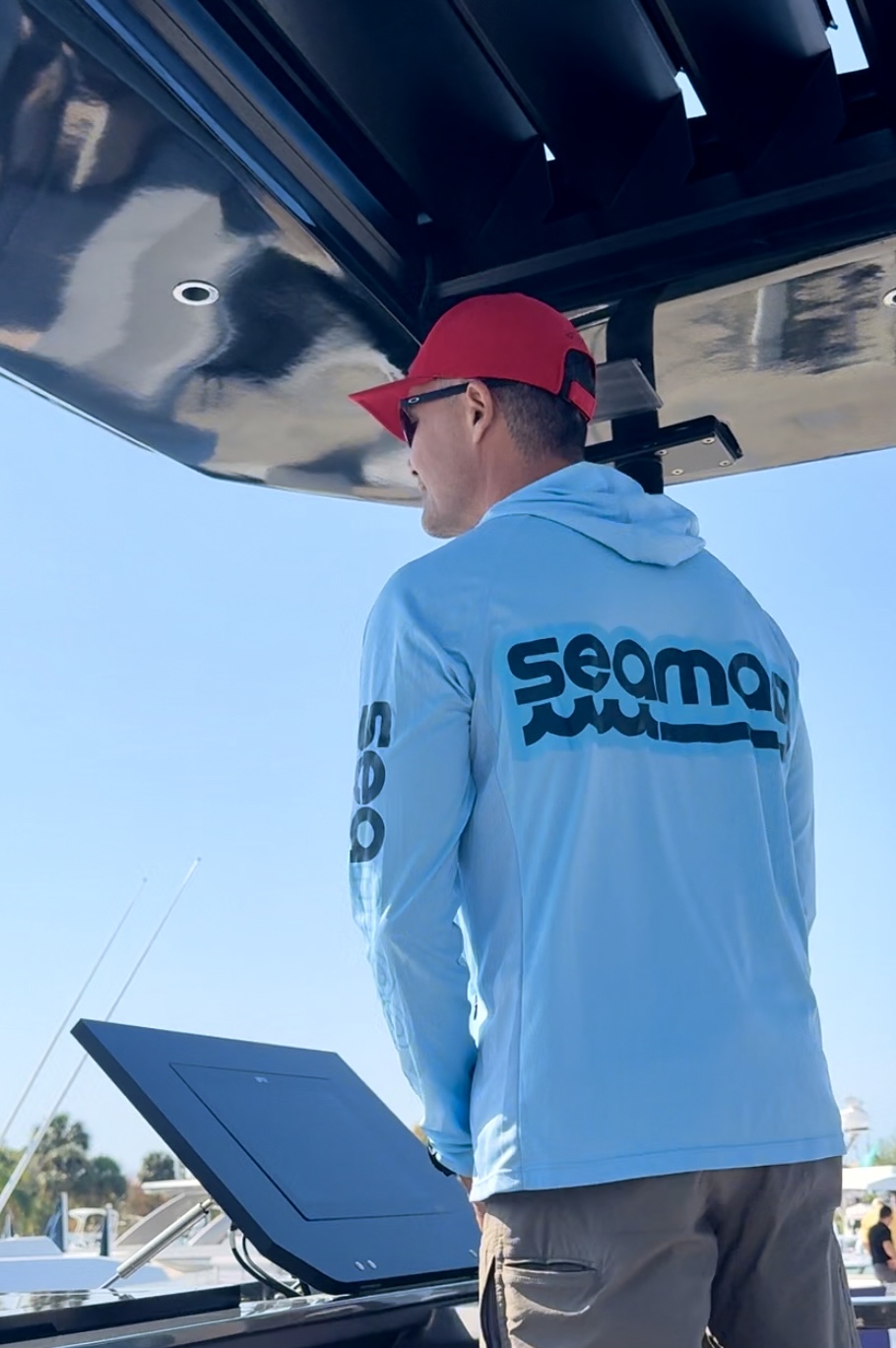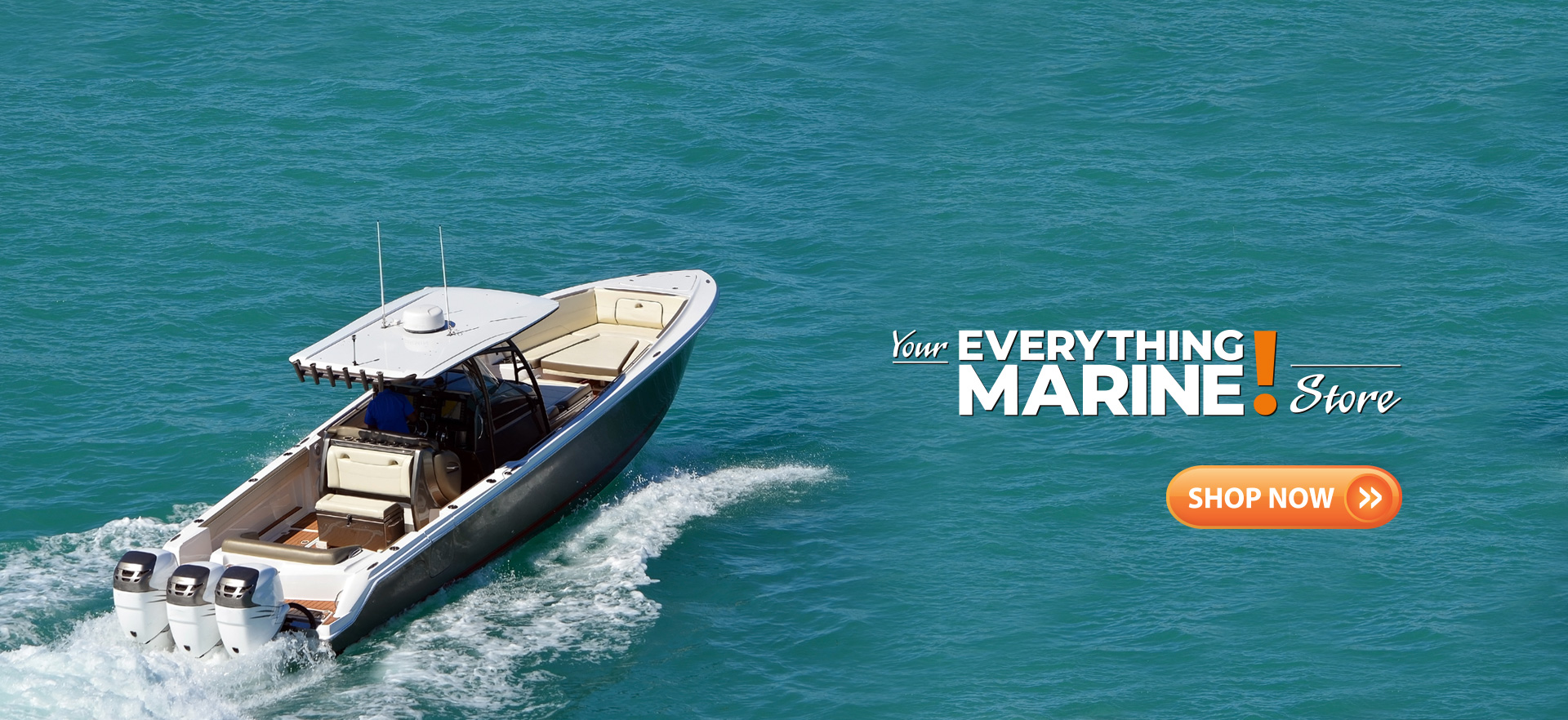Boat Terms Explained: A Quick Guide for Beginners
Boating is a popular pastime enjoyed by many worldwide, encompassing an array of activities from leisurely trips to competitive sailing.
To fully appreciate and partake in these adventures, it's essential to familiarize yourself with various boat terms, nautical expressions, and boating etiquette.
Acquiring this knowledge not only enhances your understanding of the world of boating but also ensures a safe and enjoyable experience for everyone aboard.

From basic boat anatomy to sailing fundamentals, boat terms cover a wide range of aspects in maritime activities.
This includes essential concepts related to boat operation, directional terms, safety and communication procedures, and various boat types and features.
Additionally, learning about equipment and accessories, maritime language and etiquette, maintenance and upkeep, and common questions encountered by boaters can help you build a strong foundation in the world of boating.
Key Takeaways
- Gaining knowledge of boat terms is crucial for a safe and enjoyable boating experience
- Boat terminology covers an array of aspects, from boat anatomy to sailing techniques
- Familiarity with maritime language and etiquette aids in effective communication and maintenance of boats
Basic Boat Anatomy
Hull and Structure
In discussing boat anatomy, it's essential to understand the hull and structure first.
The boat's base, known as the hull, provides buoyancy and serves as the primary structural component of the vessel.
The front of the boat is the bow while the back is the stern. The left side is referred to as the port side, and the right side is the starboard side.
Now, let us talk about the horizontal sections of the boat. The top part, known as the beam, and the bottom portion, called the keel, provide stability and support.
The transom is the cross-section at the rear of the boat, while the freeboard is the distance between the waterline and the gunwale. Finally, the gunwale is the boat's upper edge, which ensures the water doesn't enter the boat. 1
Deck Layout
Now, let's move on to the deck layout. The deck layout varies between boats, but some features are commonly present.
Bow, stern, port, and starboard are the primary orientations of the boat. Additionally, you might find hatches—openings in the deck or cabin used as windows or doors—and bulkheads, which are walls dividing the boat compartments. 2

Cockpit Elements
Next, we'll dive into the cockpit elements.
The helm is the driver's seat and the central control location, which includes the wheel or joystick and engine controls 3.
Cabin Features
Lastly, we'll explore cabin features.
Most boats provide a cabin for occupants to relax or sleep. The enclosed space features a head, which is the bathroom on a boat. Keep in mind that cabins differ in layout and amenities, depending on boat size and function. 4
Footnotes
- https://boatbiscuit.com/parts-of-a-boat-illustrated-diagram-of-a-boats-anatomy/ ↩
- https://www.discoverboating.com/resources/parts-of-a-boat ↩
- https://afellowfisherman.com/parts-of-a-boat/ ↩
- https://www.boattrader.com/research/boat-terminology-understanding-the-anatomy-of-a-vessel-and-basic-boating-terms/ ↩
Boat Operation
Navigation Basics
When I'm out on the water, I rely on charts, bearings, and various tools like the AIS (Automatic Identification System) to aid in navigation.
I use ITU signals for communication with other vessels and authorities. To ensure I reach my destination safely, I maintain an Estimated Position (EP) and an Estimated Time of Arrival (ETA).
Handling and Maneuvering
My boat's primary method of steering is the helm. Depending on the type of vessel, this could be a tiller, wheel, or even a joystick.
I pay special attention to my boat's speed and make sure the power is adjusted appropriately.
In sailboats, I carefully manage the sails, while in powerboats, I control the throttle. Some key elements to handling a boat include:
- Helm: The location from which I operate and steer the boat
- Tiller: A lever used to control the boat's rudder and change its course
- Wheel: A circular device I use to manipulate the rudder and steer the boat
Remember: I should always be prepared for changing conditions and hazards when maneuvering my boat.
Mooring and Docking
To secure my boat when not in use, I can either anchor it or moor it to a fixed object or buoy.
Docking is another option, where I bring the boat alongside a pier or slip. Here are a few things I consider:
- Anchor: A device that I use to secure my boat in place by digging into the seabed
- Moor: To attach my boat to a fixed object or buoy to keep it stationary
- Dock: A structure where I can bring my boat alongside to secure it
Directional Terms
Orientation and Positions
When it comes to nautical terminology, understanding the different directional terms on a boat is essential.
Let's begin by discussing some of the fundamental terms that describe a boat's orientation and positions.
- Port Side: Refers to the left side of the boat when you are facing the bow (front).
- Starboard Side: Opposite of the Port Side, it represents the right side of the boat when facing the bow.
- Forward and Aft: Forward refers to the direction towards the bow, while Aft is the direction towards the stern (back).
- Amidships: The midpoint or central part of the boat, located between the bow and the stern.
Here's a quick summary of these orientation terms in a table format:
| Term | Description |
|---|---|
| Port Side | Left side of the boat when facing the bow |
| Starboard Side | Right side of the boat when facing the bow |
| Forward | Direction towards the bow |
| Aft | Direction towards the stern |
| Amidships | Midpoint between the bow and the stern |
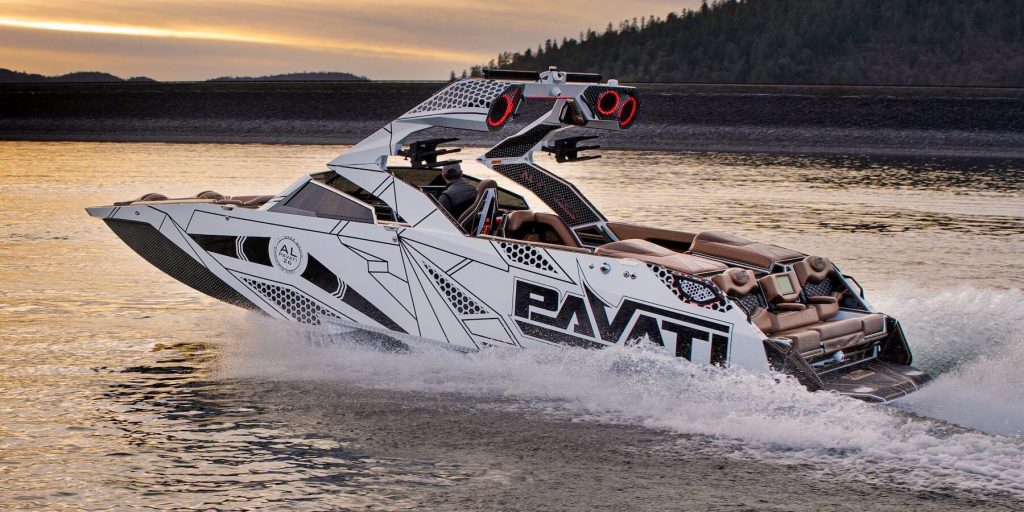
Movement and Action
Now let's explore some terms related to the movement and action of a boat on the water.
- Ahead and Astern: Ahead means moving in a forward direction, while Astern refers to moving in reverse or backward.
- Abeam: A position at a right angle to the boat's center-line, typically used to describe an object or another vessel alongside the boat.
To enhance your understanding, here is a list of these terms:
- Ahead: Moving in a forward direction
- Astern: Moving in reverse or backward direction
- Abeam: Position at a right angle to the boat's center-line
Safety and Communication
Emergency Protocols
As a boater, I always prioritize safety. Understanding the protocols for Search and Rescue (SAR) operations is crucial.
During an emergency, using a Pan-Pan message alerts nearby vessels of a potential problem without declaring a Mayday situation. This informs other crew members to stand ready for assistance.
Knowing our vessel's location, maintaining a log, and keeping track of the crew's whereabouts are critical during emergencies.
In case our boat starts listing or the vessel heels excessively, inspecting the bilge becomes necessary to address any water ingress.
Familiarizing ourselves with the wake, or turbulence our boat leaves behind, is essential to maintain stability and control. Lastly, keeping safety equipment such as buoys, life jackets, and life rafts readily accessible is a non-negotiable aspect of emergency preparedness.
Signaling and Messaging
Before we set sail, understanding clear and concise messaging using nautical terms is a must.
Both verbal and non-verbal communication is important aboard any vessel.
The use of flags, lights, and sound signals facilitates communication with other boats without the need for electronic means.
Here are a few essential signaling methods:
- Visual Signals: Using maritime signal flags, each flag represents a letter, number, or specific message. To send a message, hoist a combination of flags on the mast.
- Sound Signals: These include horn blasts, whistles, and ringing bells to announce a vessel's presence, course changes, or other maneuvers in reduced visibility conditions.
- Light Signals: Navigation lights mounted on the bow, stern, and mast should be lit from sunset to sunrise and during poor visibility situations to disclose the vessel's size, type, and direction.
Boat Types and Features
As someone who loves boating, I'm happy to share my knowledge on different boat types and their features. In this section, I will be focusing on three main categories: Sailboats, Powerboats, and Specialty Boats.
Sailboats
Sailboats are vessels that primarily rely on the wind to power them, using a combination of sails and a rudder for steering.
There are various types of sailboats, including schooners, cutters, sloops, ketches, and catamarans.
A crucial aspect of a sailboat's design is its ballast, which helps to stabilize the boat by distributing weight.
- Schooners: Two or more masts, with the main mast being taller than the foremast
- Cutters: Single-masted, with multiple headsails for improved windward performance
- Sloops: Single-masted, with one headsail and one mainsail
- Ketches: Two-masted, with a smaller mizzen mast located aft of the mainmast
- Catamarans: Consist of two parallel hulls with a sail on each hull
Powerboats
Powerboats are vessels equipped with engines, either inboard or outboard, that propel them through the water.
They come in various sizes and designs, such as cruisers, speedboats, and fishing boats. A powerboat's trim refers to the angle between the boat's hull and the waterline, which can affect its performance and speed.
Some common types of powerboats include:
- Cruisers: Designed for longer trips and leisurely journeys
- Speedboats: Built for high-speed, exhilarating rides
- Fishing Boats: Equipped with specialized gear for anglers
- Trawlers: Intended for long-distance voyages and often built for ocean-going
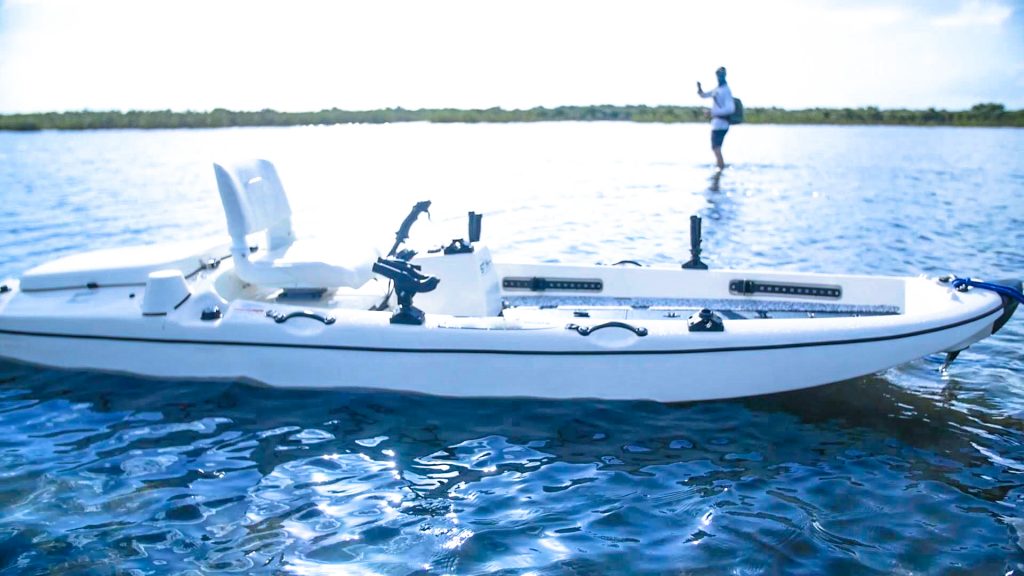
Specialty Boats
In addition to sailboats and powerboats, there are also specialty boats designed for particular purposes or environments.
These boats can be tailored for use in lakes, rivers, canals, or open ocean environments. For example, lake boats often have flat bottoms, while river and canal boats prioritize narrow beams and extended lengths.
A few examples of specialty boats include:
- Pontoon Boats: Flat-decked vessels with buoyant pontoons, ideal for leisure activities on lakes and rivers
- Houseboats: Built for extended stays on the water, offering comfortable living spaces
- Personal Watercraft: Small, jet-powered machines designed for one or two riders
Sailing Fundamentals
Understanding the Wind
As a sailor, it's important for me to understand the wind and how it affects my boat.
The wind has two main directions: windward and leeward. Windward is the direction from which the wind is coming, while leeward is the opposite direction, where the wind is blowing towards.
To sail effectively, I need to know how to position my boat and sails in relation to the wind.
The wind's force on the sails is what propels the boat forward.
If I'm sailing into the wind, my sails will be set at an angle to the wind, while if I'm sailing with the wind at my back, my sails will be set almost perpendicular to the wind.
By understanding the wind and how it interacts with my sails, I can optimize my boat's speed and direction.
Sail Handling and Control
Managing the sails is a crucial aspect of sailing. The main components of a sail are:
- Sail: The large, triangular material attached to the mast and boom. This is the primary force for propelling the boat. Mainsails are the most important sails to get acquainted with when starting out.
- Sheet: A line used to control the angle of the sail in relation to the wind.
- Line: Ropes used for various purposes on a boat, including sail control.
To effectively control my sail, I need to adjust its angle by pulling or releasing the sheet.
The tighter the sheet, the more wind the sail catches—perfect for sailing upwind.
Conversely, if I'm sailing downwind, I need to let the sheet out to catch more wind, propelling the boat forward.
Knowing how to handle the sail and control its angle helps me optimize my boat's performance and keep it on course.
Equipment and Accessories
As a boater, you should be well-acquainted with a variety of equipment and accessories that are essential for a seamless and safe experience on the water. In this section, I will discuss some common onboard tools and safety gear, as well as other relevant terms.
Onboard Tools
The Cleat is a vital component found onboard most boats, utilized to secure lines and ropes. They come in different shapes and sizes, depending upon your boat's specific requirements.
A Fender is a protective cushion placed between your boat and a dock, or other boats, to prevent damage while mooring. Fenders are generally made of durable materials to withstand impact and the harsh marine environment.
Boats are propelled through the water using a Prop or propeller. The prop, connected to the boat's engine, converts rotational energy into forward thrust.
The Galley is the boat's kitchen where food is prepared and stored. Depending on your boat's size, it may be equipped with essential cooking appliances and storage space.
For sleeping and resting, boats often have a Berth. This designated sleeping area may come in various configurations, such as single or double berths.
A Bimini is a canvas covering supported by a metal frame, designed to provide shade and shelter from the sun and rain. Biminis are particularly useful on open boats that lack a hardtop or cabin.
In boat design, the Chine refers to the angle where the hull's bottom and sides meet. The chine impacts how a boat handles in different sea conditions.
Safety Gear
An Outboard Motor is the primary source of propulsion for smaller boats. Selecting the right outboard motor is crucial for a smooth and efficient boating experience, depending on your boat's size and intended purpose.
Finally, a vital aspect of boating is the proper Safety Equipment. Life jackets, fire extinguishers, flares, VHF radios, and other safety gear are essential for ensuring a secure experience on the water. Regular inspections and maintenance will help keep your safety equipment in optimal condition, ready for use in case of emergencies.
Maritime Language and Etiquette
Terminology
As a boating enthusiast, I'm quite aware of the vast number of nautical terms related to boats, water, and the sea. A comprehensive glossary of nautical terms is helpful for any sailor, from beginners to experienced seafarers. For instance, familiar terms like "adrift" imply a boat floating freely without propulsion or anchorage, and "draft" refers to the vertical distance between the lowest point of the keel and the vessel's center-line.
When on the water, it's important to remember common position indicators, such as:
- Port - the left-hand side of the boat when you're facing forward
- Starboard - the right-hand side of the boat when you're facing forward
- Aft - the rear part of the boat
- Bow - the front part of the boat
Additionally, when we refer to directions in relation to the vessel, we use terms like:
- Above - on a higher deck
- Below - on a lower deck
- Aboard - on or within the boat
- On Board - refers to being a crew member or guest on the vessel
Conduct at Sea
As seafarers, we must show proper conduct both at sea and when interacting with other sailors. It's essential to ensure safety and maintain that friendly nautical spirit.
For example, while sailing or boating, I always give a proper nautical greeting like "Ahoy!" when meeting other boaters. This simple greeting helps to establish camaraderie and shows a respect for the maritime culture.
Another crucial aspect of conduct at sea pertains to the quarter, which denotes the edges of the boat. It is essential to be cautious when navigating close to other vessels, especially nearby their quarters. This ensures the safety of both boats and people on board.
Maintenance and Upkeep
As a boat owner, it's important for me to properly maintain my boat to ensure its longevity and performance. In this section, I'll discuss some essential boat care practices and common repairs that can help maintain a well-functioning boat.
Boat Care Practices
To keep your boat in top condition, I recommend following these routine maintenance tasks:
- Cleaning: Regularly clean the fiberglass gel coat to prevent oxidation and maintain its shine. Also, keep the boat's canvas clean by using a light brush, mild soap, and fresh water.
- Lubrication: Ensure that moving parts, such as the rudder and other fittings, are well-lubricated to prevent corrosion and wear.
- Inspect the Hull and Deck: Regularly check for cracks, blisters, or any other damage that may affect the integrity of your boat's structure.
- Bilge Maintenance: Keep the bilge clean and dry, as accumulated water and debris can cause damage to the boat's components.
- Sail Care: Regularly inspect the sail for any signs of wear or damage and make necessary repairs to ensure optimal performance.
- Trailer Maintenance: If you trailer your boat, ensure the trailer is in impeccable condition, checking the axle, tires, hitch, cabling, connectors, and brakes.
Common Repairs
As a boat owner, it's essential to be aware of the common repairs that may be needed over time:
- Hull and Deck Repairs: Fixing cracks, blisters, or other damage to the boat's hull and deck is crucial to maintain the boat's structural integrity.
- Bilge Pump Repair/Replacement: A malfunctioning bilge pump can lead to water accumulation in the bilge, causing damage to the boat's components.
- Rudder Repair/Replacement: Ensure the rudder remains in good working condition, as it directly impacts the boat's steering capabilities.
- Sail Repair/Replacement: Damaged sails can hinder the boat's performance, so it's essential to repair or replace them as needed.
Frequently Asked Questions
What is the nautical term for the left side of a boat?
In nautical terminology, the left side of a boat is referred to as the port side. This term dates back to the time when ships docked with their left sides facing the port, making it easier for sailors to load and unload cargo.
Which term describes the rear end of a boat?
The rear end of a boat is referred to as the stern. The stern plays a crucial role in the boat's propulsion and steering because it houses the engines and the rudder.
What are the terms used to indicate direction while at sea?
When navigating at sea, sailors use terms like port, starboard, bow, and stern to indicate direction. As I mentioned earlier, port refers to the left side of the boat, while starboard is the right side. The bow is the front of the boat, and the stern is the back.
How do you differentiate between port and starboard?
To differentiate between port and starboard, you must remember that when facing the bow (i.e., facing the front of the boat), port is on your left side, while starboard is on your right side. Additionally, port is often associated with the color red while the starboard is associated with the color green, which can help you to remember their positions.
What is the meaning of 'bow' in boat terminology?
The bow refers to the front part of a boat. The shape and design of the bow affect the vessel's ability to cut through the water, enhancing its speed and stability during navigation.
Can you explain the term 'stern' in the context of maritime language?
As I previously mentioned, the stern refers to the back or rear end of a boat. It is essential in boat propulsion and steering because it usually houses the engines, the rudder, and propellers.
The design of the stern also affects the vessel's hydrodynamics and overall performance, making it a crucial part of the boat's design.
Charlie is Editor-in-Chief of Sea Magazine

